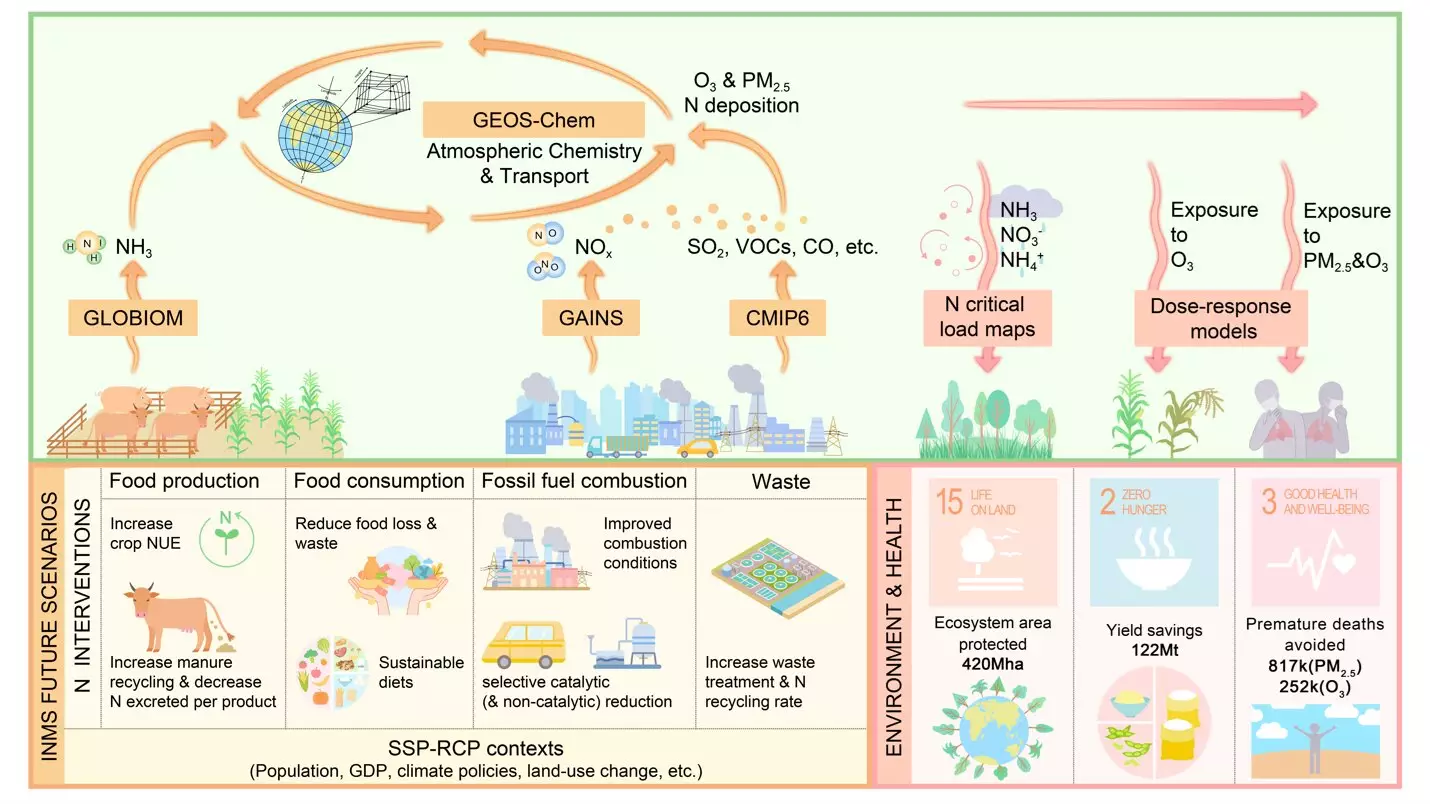The nitrogen cycle is a fundamental aspect of Earth’s ecological balance, yet human activities have led to significant disruption. Agricultural practices and excessive fossil fuel consumption have resulted in the release of various nitrogen pollutants, such as ammonia (NH3), nitrogen oxides (NOx), and nitrous oxide (N2O). These contaminants contribute to air pollution, which adversely affects not only human health but also crop viability and overall ecosystem integrity. The ongoing increase in global energy consumption alongside the rising demand for food poses serious challenges, suggesting that the negative impacts of nitrogen pollution will likely escalate if left unmitigated.
Despite the urgency surrounding nitrogen pollution, there remains a lack of coordinated research encompassing the intricate details of nitrogen dynamics across different environments. Traditional nitrogen budget studies tend to focus on quantifying nitrogen flows in air, water, and soil but often miss out on the biogeochemical transformations that dictate how nitrogen compounds interact within ecosystems. On the other hand, Earth science research frequently zeroes in on specific environmental mediums, neglecting to integrate findings comprehensively. This disconnect creates a barrier to developing effective strategies aimed at reducing nitrogen-related environmental damage.
To bridge this gap, researchers have recently adopted a multidisciplinary approach, integrating diverse methodologies to assess how “nitrogen interventions” could enhance air quality and minimize detrimental nitrogen deposition consequences. By examining a range of nitrogen management strategies, the research community aims to understand better the multifaceted implications of nitrogen use within various contexts.
A recent study published in *Science Advances* highlights the substantial potential of nitrogen interventions. These may include strategies such as optimizing combustion processes, enhancing the efficiency of nitrogen use in agriculture, and decreasing food wastage. The researchers found that proactive nitrogen management could lead to a staggering reduction in premature deaths attributed to air quality degradation, as well as significant financial savings by curbing crop losses and minimizing ecosystem risks.
The lead author of the study, Yixin Guo, sheds light on the methodology employed: an integrated assessment framework that combines hypothetical nitrogen policy scenarios with various models. This multifaceted approach allows for a detailed regional analysis, improving policymakers’ ability to implement effective interventions tailored to local circumstances. The projections are encouraging; by 2050, ambitious nitrogen strategies could potentially decrease global emissions of ammonia and nitrogen oxides by 40% and 52% respectively from 2015 levels.
The analysis indicates that neglecting these nitrogen policies could exacerbate environmental issues, particularly in regions like Africa and Asia, where the ramifications will be felt most acutely. Conversely, implementing these measures could significantly benefit these areas, highlighting the importance of globally coordinated efforts to address nitrogen pollution. As populations grow, the health dividends from effective nitrogen interventions are anticipated to increase substantially, particularly in developing regions where air quality is already a pressing concern.
By projecting that the most considerable reductions in ammonia and nitrogen oxides will arise in East and South Asia, researchers emphasize the role of improved agricultural practices and technological advancements in industry. These strategies are not merely reactionary; they represent a crucial step toward achieving key Sustainable Development Goals (SDGs)—considering public health, food security, and responsible resource management.
The findings from this collaborative research endeavor underscore the need for a paradigm shift in how policymakers approach nitrogen management. Recognizing the interconnectedness of air quality, public health, agriculture, and environmental sustainability is vital in crafting legislation that serves multiple objectives, such as Good Health and Well-being (SDG3), Zero Hunger (SDG2), Responsible Consumption and Production (SDG12), and Life on Land (SDG15).
Scientifically-informed nitrogen interventions are not only feasible; they are essential for global sustainability. By forging connections across disciplines and geographical boundaries, society can begin to mitigate the detrimental effects of nitrogen pollution while fostering healthier ecosystems and communities. As researchers like Wilfried Winiwarter advocate for region-specific policy recommendations, it is crucial that countries embrace customized solutions to address the complexities of nitrogen pollution for a sustainable future.

